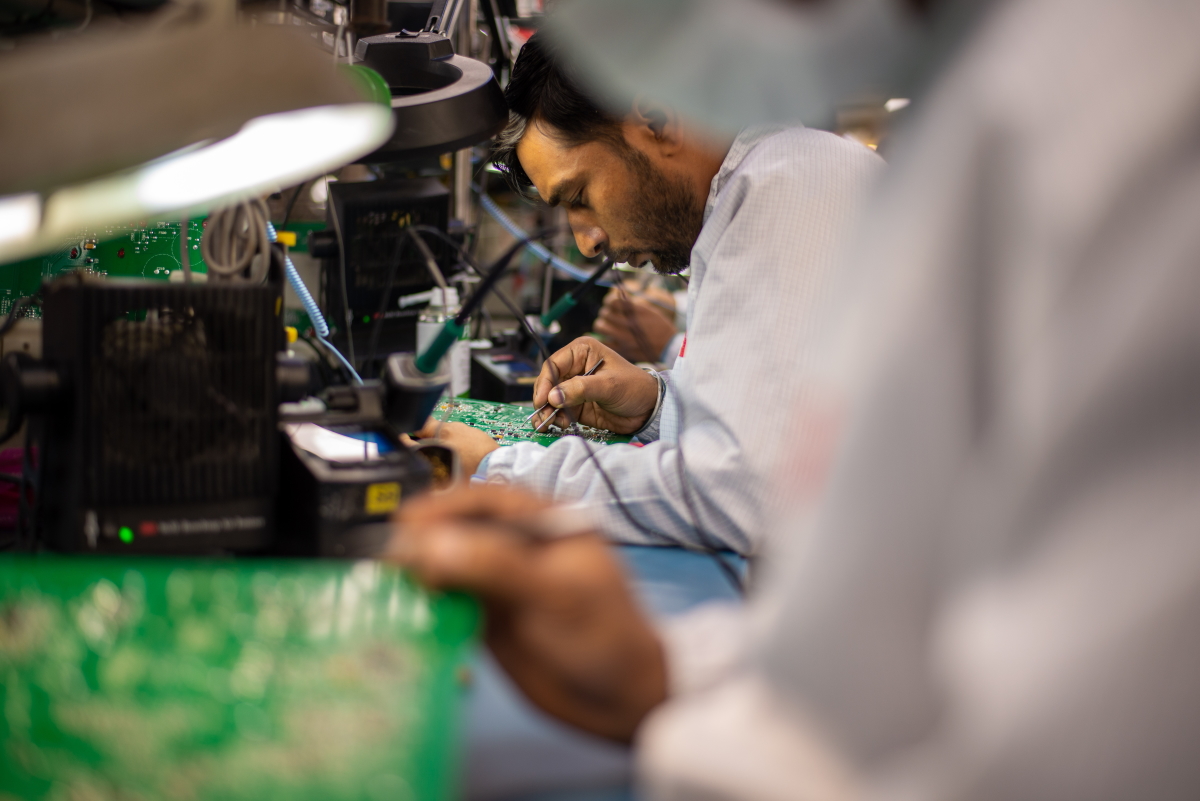In the midst of a worldwide chip shortage, India is powering ahead with plans to become a global semiconductor manufacturing hub. The semiconductor demand in India is met entirely through imports, which currently stands at approximately $24 bn. This is expected to grow to $100 bn by 2025, according to Invest India.
To reduce India’s dependency on imports, India’s government has given nod for a $10 bn to build a semiconductor ecosystem, that includes design, fabrication, packaging, testing.
The Ministry of Electronics & Information Technology (MeitY) released guidelines for four specific schemes on December 30, that make a ‘comprehensive programme for the development of a sustainable semiconductor ecosystem’ in the country. This so-called Production Linked Incentive (PLI) scheme that is spread across 6 years, is expected to bring in investments of up to $22.5 bn.
Under the first two schemes that aim for setting up semiconductor foundries (commonly called fabs) and display fabs, the government plans to provide financial support of up to 50% of the project cost to all the eligible applicants. The government is also targeting to establish High-Tech Clusters and plans to set up at least two greenfield semiconductor fabs and two display fabs.
The third scheme provides incentives for specialised fabs and provides fiscal support of 30% of capital expenditure to approved units to Compound semiconductors/silicon photonics/sensors (including MEMS) fabs and semiconductor ATMP / OSAT units. The fourth scheme focus on setting up semiconductor fabs in India. Under this, another design linked incentive of up to 50% of eligible expenditure will be offered to 100 domestic companies of semiconductor design for integrated circuits (ICs), chipsets, system on chips (SoCs), systems & IP cores and semiconductors linked to design.
In addition to this, the government also plans to take requisite steps for the modernization and commercialization of the Semi-conductor Laboratory (SCL), the research institute of the Department of Space, Government of India.
The Cabinet has simultaneously decided to establish an India Semiconductor Mission helmed by a body of ‘global industry experts’ along with government officials, to power the development of the chip and display industry. This overall incentive plan would additionally result in employment for 85,000 people.
Attracting international industry giants
The drive for setting chip manufacturing hub comes as India tries to cut reliance on supplies from China and plans to capitalise on the global China Plus One business sentiment (business strategy where global manufacturing houses avoid investing only in China and diversify their businesses into other countries).
In order to broaden the scope of manufacturing and exports, the government is in discussions with global chip manufacturing giants like TSMC, Intel and AMD to set up factories in the country. Besides these, Israel’s Tower Semiconductor, Taiwan’s Foxconn and a consortium from Singapore have also shown interest, Reuters reported in December.
In September, the Indian government announced plans for setting up a free-trade agreement (FTA) with Taiwan. The government is aiming to build a semiconductor manufacturing hub with the help of Taiwan and aims to invest over $7.5 bn over the same.
In August 2021, one of India’s biggest conglomerates – the Tata group announced its venture into the chip fabrication business. The conglomerate is reportedly in talks with three states to invest about $300 m, for setting up a chip assembly and test unit. Vedanta Group, one of the world’s leading diversified natural resources companies, has also reportedly announced plans to set up a semiconductor manufacturing plant in India.
However, India’s current manufacturing capacity is still not big enough to compete with the existing players from countries like the US, Japan, Taiwan, and South Korea. Besides this, India has been dependent on imports for its semiconductor demand, which is growing exponentially.
India’s push to move up the electronics value chain
The ongoing US-China electronics trade disputes as well as rising geopolitical tensions with Beijing has further led India to move up the electronics value chain. With the $10 bn additional incentives for the semiconductor industry, the government has announced a total amount of incentives worth $30 bn for the electronics sector, to lure the world’s largest electronics manufacturers to set up facilities in India.
This push follows the government’s earlier budgeted $7.2 bn scheme to promote large-scale production of electronics and another $12 bn to boost manufacturing of advanced batteries, auto components, telecommunications and networking products.
According to a report by the Ministry of Electronics and Information Technology (MietY), India has an unprecedented opportunity to grow electronics manufacturing to $300 bn in the next 3-4 years, from $72 bn worth of overall electronic production this year.
To further seize this opportunity, the Indian Cabinet in early 2021 announced an incentive scheme for targeted sectors like laptops, tablets, all-in-one personal computers (PCs) and servers, to boost domestic manufacturing and attract large investments in the value chain of these IT hardware products.
The plan targeting 14 eligible applicants would also generate additional direct employment opportunities of more than 36,000 over the next 4 years. In total, the Indian government has budgeted over $302 bn towards various PLI schemes for electronics manufacturing.
Additionally, the government has allowed 100% Foreign Direct Investment (FDI) for the electronics sector, under the automatic route. Under this route, foreign investment can be made without requiring any approval from RBI or the Government of India.










 Australia
Australia China
China India
India Indonesia
Indonesia Japan
Japan Malaysia
Malaysia Philippines
Philippines Singapore
Singapore South Korea
South Korea Taiwan
Taiwan Thailand
Thailand Vietnam
Vietnam Germany
Germany Hong Kong
Hong Kong USA
USA Switzerland
Switzerland Singapore
Singapore
 United Kingdom
United Kingdom







